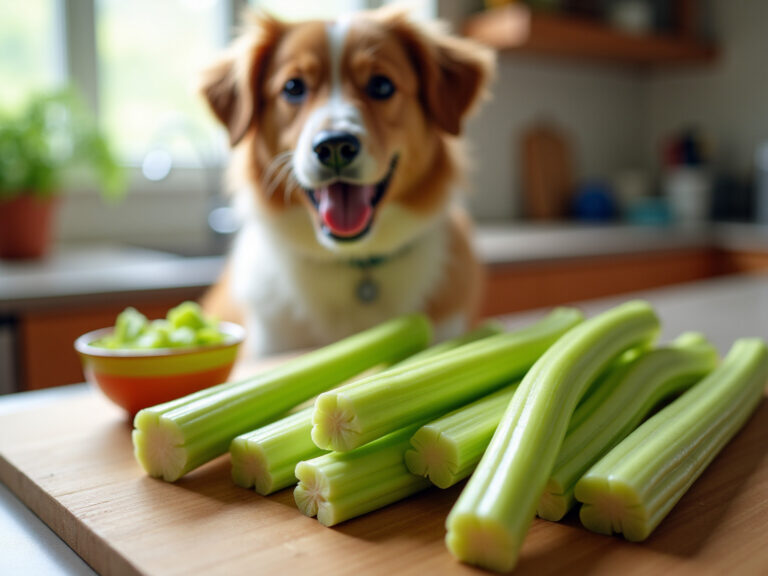Understanding the Blue Cane Corso: Traits, History, and Care
Overview
This article shines a light on the blue cane corso, a captivating variant of the cane corso breed. It explores the unique traits, rich history, and essential care requirements of these wonderful companions. Known for their striking blue coat, loyalty, and protective nature, blue cane corsos truly embody the spirit of a loving family pet.
Understanding the needs of your furry family members is crucial. This breed thrives on proper training, socialization, and regular exercise, which are vital for their well-being and adaptability as cherished family companions. At Adventure Den, we recognize the importance of nurturing environments that foster the happiness and health of your pets.
By providing the right care and attention, you can ensure that your blue cane corso flourishes in your home. Let us help you create a loving space where your pet can thrive, filled with love, understanding, and the joy of companionship. Embrace the journey of pet ownership with confidence, knowing that a well-cared-for cane corso will bring immense joy and loyalty to your family.
Introduction
The allure of the blue cane corso captivates not only through its striking appearance but also via its rich history and unwavering loyalty. As a cherished variant of the Italian mastiff, this breed embodies a remarkable blend of strength, intelligence, and protective instincts, making it a beloved choice among dog enthusiasts.
However, as you consider welcoming one of these magnificent dogs into your life, it’s essential to navigate the complexities of their care needs and the breed’s historical challenges. This raises an important question: what does it truly take to ensure a fulfilling life for your furry family member, the blue cane corso?
Together, let’s explore the nurturing environment that can support both you and your new companion.
Define the Blue Cane Corso: Characteristics and Distinctions
The striking variant of this breed, known as the blue cane corso, is truly captivating and is primarily recognized for its stunning blue or grayish-blue fur. With a muscular build, broad head, and a strong, confident demeanor, these dogs typically weigh between 90-120 pounds. The blue cane corso is particularly renowned for its loyalty and protective instincts, making it an exceptional guardian for families. Their unique coat color, resulting from a dilution of the black pigment—a recessive trait—adds to their charm among dog enthusiasts.
While they share many traits with the typical breed, the blue cane corso’s distinctive coloration enhances its appeal, drawing in those in search of a devoted and protective companion. Their intelligence and adaptability further highlight their suitability as both family pets and working dogs, requiring consistent training and socialization to flourish in various environments. As a prospective owner, it’s essential to be mindful of potential health concerns, such as hip dysplasia and cardiac issues, alongside the need for regular grooming, including weekly brushing to keep their coat in top condition.
The average lifespan of a typical Italian Mastiff ranges from 10-12 years, underscoring the commitment needed to care for this breed. By understanding their needs and providing a nurturing environment, you can ensure a fulfilling life for your furry family member.

Trace the Origins: History of the Blue Cane Corso Breed
The breed of Italian mastiffs, including the blue cane corso, has a fascinating history that traces back to ancient Italy. Developed from the Molossian canines utilized by the Romans, these impressive dogs were bred for various roles—guarding property, hunting large game, herding cattle, and even serving as war animals. Their versatility and strength are truly remarkable.
The distinctive coloration of the blue cane corso breed likely emerged through selective breeding practices that favored this hue, making it particularly appealing to dog enthusiasts. However, despite its rich history, the breed faced near extinction in the mid-20th century. Changing lifestyles and a decreased need for large guard dogs contributed to this decline, which may concern potential owners.
Fortunately, a dedicated resurgence began in the 1970s, led by passionate breeders and enthusiasts eager to revive the breed. Their efforts paid off, as the breed gained recognition from various kennel clubs, including the Società Amatori Dog in 1983 and the American Kennel Club (AKC) in 2010. By 2019, it was ranked as the 40th most popular dog breed in the United States.
Corsos typically weigh between 120-160 pounds and stand 25-28 inches tall, with a lifespan of approximately 10-12 years. It’s important to note that the breed is known to be susceptible to health issues such as hip dysplasia and idiopathic epilepsy, which potential owners should consider carefully. The Corso’s name translates to ‘dog guarding enclosed estates,’ reflecting its historical role as a guardian.
Today, the breed’s adaptability allows it to serve in various roles, making it a favored choice for families and individuals alike. If you’re looking for a loyal companion that can thrive in a nurturing environment, the Italian Mastiff may be the perfect addition to your family.

Identify Key Characteristics: Physical and Behavioral Traits
The blue cane corso, your furry family member, is truly remarkable with its impressive physical build. Typically, they stand between 24 to 28 inches tall and weigh between 99 to 110 pounds for males and 88 to 99 pounds for females. Their robust, muscular bodies are complemented by broad heads and expressive eyes that reflect their intelligence and loyalty.
These dogs are known for their protective and affectionate nature towards their families, even though they may be a bit reserved around strangers. To nurture well-rounded companions, early socialization and consistent training are essential. Imagine the joy of having a loyal friend who is eager to please you! However, it’s important to remember that their keen intelligence can lead to a strong-willed temperament. This means that experienced handling is necessary to guide them towards proper behavior.
Additionally, Corsos require at least an hour of daily exercise to keep them happy and prevent any destructive behavior. Providing adequate physical activity is crucial for their well-being. By ensuring they stay active, you are fostering a nurturing environment that allows your beloved pet to thrive. Embrace the journey of caring for your blue cane corso, and see them grow into a cherished member of your family.

Outline Care Needs: Health, Training, and Maintenance
Caring for your blue cane corso is a journey filled with love and responsibility, and understanding their needs is essential for their well-being. Regular exercise is not just beneficial; it’s crucial. These wonderful dogs thrive on at least 1 hour of daily activity, which keeps them physically healthy and mentally stimulated. Engaging in brisk walks, jogging, or interactive games like fetch or tug-of-war not only provides essential exercise but also strengthens the bond between you and your furry family member.
Training your Corsos should begin early, using positive reinforcement techniques to nurture good behavior and foster a deep connection. Given their confident and assertive nature, it’s important to employ consistent, firm, yet gentle training methods to establish effective leadership.
When it comes to grooming, you’ll find it relatively low-maintenance. Their short coat requires just weekly brushing to minimize shedding, especially during those seasonal changes. Health-wise, these robust dogs can be predisposed to certain conditions, such as hip dysplasia and bloat, particularly due to their large size. Regular veterinary check-ups and a balanced diet are vital for their overall health. To help prevent obesity and its associated health issues, your blue cane corso will need approximately 4-5 cups of high-quality dry dog food daily, divided into two meals.
By prioritizing these care needs, you can ensure that your blue cane corso remains a happy and healthy companion, enriching your life with their loyal presence. Embrace the joys of pet ownership, and remember, at Adventure Den, we’re here to support you every step of the way.
Conclusion
The blue cane corso truly stands out as a remarkable breed, celebrated for its striking appearance and unwavering loyalty. With its muscular build and unique blue coat, this Italian Mastiff variant is not just a visual delight; it is also a devoted guardian, making it an ideal companion for families seeking both protection and affection.
In this article, we’ve explored key aspects of the blue cane corso, including its historical origins, physical characteristics, and essential care requirements. From its ancient roots as a versatile working dog to its present-day role as a beloved family pet, the breed’s journey is a testament to its adaptability and enduring appeal. Understanding their need for exercise, training, and health maintenance is crucial for any prospective owner, ensuring a happy and fulfilling life for both the dog and its family.
In summary, the blue cane corso is more than just a beautiful dog; it is a loyal companion that thrives on love, training, and proper care. For those considering welcoming this breed into their homes, embracing these responsibilities will not only enhance the dog’s well-being but also enrich the lives of everyone involved. Caring for a blue cane corso is a journey filled with joy, loyalty, and companionship, making it a truly rewarding experience.
Frequently Asked Questions
What is a blue cane corso?
The blue cane corso is a striking variant of the cane corso breed, recognized for its stunning blue or grayish-blue fur, muscular build, broad head, and strong demeanor.
What are the weight and size characteristics of a blue cane corso?
Blue cane corsos typically weigh between 90-120 pounds.
What are the key personality traits of a blue cane corso?
Blue cane corsos are known for their loyalty, protective instincts, intelligence, and adaptability, making them excellent guardians and companions.
How does the coat color of a blue cane corso differ from other cane corsos?
The blue cane corso’s unique coat color results from a dilution of the black pigment, which is a recessive trait, enhancing its appeal among dog enthusiasts.
What are the training needs of a blue cane corso?
Blue cane corsos require consistent training and socialization to thrive in various environments.
What health concerns should prospective owners be aware of?
Potential health concerns for blue cane corsos include hip dysplasia and cardiac issues.
How should a blue cane corso’s coat be maintained?
Regular grooming is essential, including weekly brushing to keep their coat in top condition.
What is the average lifespan of a blue cane corso?
The average lifespan of a blue cane corso ranges from 10-12 years.
What commitment is required for caring for a blue cane corso?
Prospective owners should understand their needs and provide a nurturing environment to ensure a fulfilling life for the blue cane corso.







